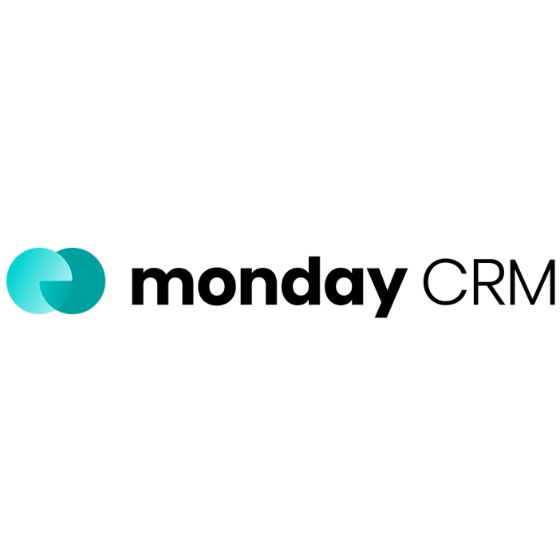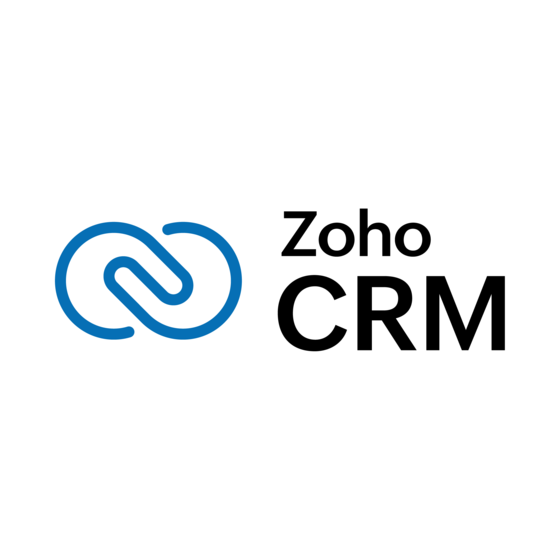Managing leads isn’t just about getting names on a list. The real challenge is turning those leads into paying customers. That’s where a Lead Management System (LMS) comes into play.
What Is a Lead Management System (LMS)?
An LMS is a tool designed to help businesses capture, qualify, nurture, and convert leads more effectively.
Think of it as a command center for everything related to your leads. It keeps the sales process smooth and organized, making sure no potential customer slips through the cracks.
Core Functions of a Lead Management System
A good LMS should handle several key tasks:
- Lead Capture & Qualification: Automatically gathers leads from sources like websites, social media, or email campaigns. It then ranks these leads so your sales team can focus on the ones most likely to convert.
- Lead Distribution: Once qualified, leads are assigned to the right sales rep, whether by territory, expertise, or availability. This means quick and efficient follow-up.
- Lead Nurturing & Scoring: By engaging with potential customers over time, the LMS helps move them along the sales funnel. Lead scoring also helps prioritize based on how interested or valuable a lead might be.
- Tracking Lead Conversion: Following the customer’s journey gives you insight into what works and what doesn’t in turning a lead into a customer.
- Reporting & Analytics: Detailed reports help track the performance of your efforts, letting you know where to improve and what’s driving results.
-

monday CRM
Visit WebsiteThis is an aggregated rating for this tool including ratings from Crozdesk users and ratings from other sites.4.6 -

Pipedrive CRM
Visit WebsiteThis is an aggregated rating for this tool including ratings from Crozdesk users and ratings from other sites.4.3 -

Zoho CRM
Visit WebsiteThis is an aggregated rating for this tool including ratings from Crozdesk users and ratings from other sites.4
LMS vs. CRM
Although an LMS and a CRM (Customer Relationship Management) system might seem similar, they serve different purposes. An LMS is focused on the lead management process, while a CRM deals with the entire customer journey, from lead to long-term client. Still, many businesses use both systems together for a full view of customer interactions.
How Does an LMS Integrate with a CRM?
An LMS coupled with a CRM is a powerful integration that can really rev up your sales cycle. This integration can sync data, automate lead tracking, generate reports, and much more (see below) to give you insight into the complete customer journey.
That knowledge will help you make more data-backed decisions and optimize throughout the lead funnel. Here's how the two work together:
Data Synchronization
- How it works: The LMS captures leads from various sources (like forms, emails, or social media) and automatically syncs this data with the CRM. This makes sure that once a lead is captured and qualified, all relevant information—such as contact details, lead scores, and interactions—is passed into the CRM.
- Benefits: Your sales team gets a unified view of every lead, reducing manual data entry and eliminating the risk of data discrepancies between the two systems.
Unified Lead Tracking
- How it works: The integration tracks leads throughout the entire sales process. The LMS handles early-stage lead management—like capture, qualification, and nurturing—while the CRM takes over when the lead is ready to move further down the pipeline.
- Benefits: This continuous tracking means no information is lost during the handoff from marketing to sales, and leads are properly followed up based on their current stage in the funnel.
Automated Lead Routing
- How it works: The LMS often includes lead routing features, such as assigning leads to the right sales reps based on location, expertise, or lead score. Once assigned, this information is passed to the CRM, which can trigger follow-up tasks, notifications, or sales workflows.
- Benefits: Automated distribution speeds up response times and connects sales reps with qualified leads immediately.
Lead Nurturing and Campaign Management
- How it works: Lead nurturing campaigns are often managed by the LMS, particularly in the early stages of engagement. Through the integration, the CRM can track how leads interact with these campaigns, such as which emails were opened or which content was downloaded.
- Benefits: This visibility allows sales teams to take action at the right time, such as following up with leads when they show high interest.
Lead Scoring and Prioritization
- How it works: The LMS assigns a score to leads based on their behavior and engagement, such as website visits, email opens, or social media interactions. These scores are transferred to the CRM, where sales reps can easily prioritize high-scoring leads and focus on those with the highest conversion potential.
- Benefits: This integration helps sales teams focus on leads that are most likely to convert, improving efficiency and closing rates.
Customer Lifecycle Management
- How it works: Once a lead converts to a customer, the CRM takes over for managing the ongoing relationship. The CRM will store all customer interactions, purchase history, and service requests. However, the LMS continues to track engagement and feed this information back into the CRM for future upselling or cross-selling opportunities.
- Benefits: The integration brings a complete view of the customer journey, from initial lead to long-term customer, which helps improve retention and customer satisfaction.
Reporting and Analytics
- How it works: Both the LMS and CRM generate reports on lead performance, conversion rates, and sales pipeline activity. When integrated, these systems offer a unified dashboard where businesses can track the entire customer journey—from lead generation to post-sale customer service.
- Benefits: This integration provides a holistic view of marketing and sales efforts, enabling data-driven decisions to improve lead generation strategies and sales processes.
Tips for a Successful Integration
- Keep Data Consistent: When syncing data, make sure both systems are using the same field names and data structures. This avoids discrepancies and keeps all records accurate.
- Enable Two-Way Sync: Choose an LMS and CRM that support two-way syncing. This allows updates made in either system to reflect automatically in the other.
- Map Your Sales Process: Clearly map out your lead management process before integrating so the handoff between LMS and CRM is smooth.
- Train Your Team: Make sure your sales and marketing teams understand how to use both systems in tandem, so they can fully leverage the integration.
Why Use a Lead Management System?
An LMS doesn’t just help you organize leads—it transforms the way you capture, prioritize, and nurture them, allowing your team to focus on what truly matters: building relationships and closing deals. Here’s a closer look at how an LMS can make a big difference for your business:
- Better Lead Conversion: By prioritizing the right leads and nurturing them, you’re more likely to turn prospects into paying customers.
- Increased Efficiency: Automation frees up your sales team to focus on what matters—closing deals.
- Improved Customer Experience: When leads are handled promptly and efficiently, they’re more likely to become happy customers.
- Data-Driven Insights: An LMS provides valuable information on lead behavior, helping you make smarter marketing and sales decisions.
Key Features to Look For
When choosing an LMS, some features are essential:
- Lead Scoring: Helps your team prioritize leads based on their potential value.
- Lead Routing: Automatically assigns leads to the appropriate salespeople.
- Automation: Cuts down on repetitive tasks, helping your team stay efficient.
- Integration: Connects your LMS with other tools like CRM and email platforms.
- Reporting & Analytics: Lets you track lead performance and optimize campaigns.
How to Set Up an LMS in 10 Steps
1. Identify Your Needs and Goals
Before diving into setup, take the time to define your specific requirements and objectives for the LMS. This will help you tailor the system to your business.
Best Practice: Involve your sales and marketing teams to understand their pain points. For example, do they need help with lead qualification or tracking conversions? Their input will help you prioritize features.
2. Choose the Right LMS Platform
With your needs in mind, research and select the LMS that best aligns with your business goals. Pay attention to functionality, scalability, and ease of use.
10 Best Free Lead Management Options
Here's my pick of the 10 best software from the 10 tools reviewed.
3. Set Up Lead Capture Mechanisms
Configure the system to automatically capture leads from all your channels—website forms, social media, emails, and more. The more seamless this process is, the less chance there is of losing potential customers.
Best Practice: Connect all forms on your website, landing pages, and email campaigns with the LMS to feed leads into the system.
4. Define Lead Qualification Criteria
Set up clear lead qualification rules. This will help your sales team focus on high-potential leads rather than wasting time on unqualified prospects.

Best Practice: Use a combination of demographic and behavioral data to create your qualification criteria. Leads from certain industries or leads who download a white paper may be more qualified according to your unique criteria.
5. Automate Lead Distribution
Next, configure the LMS to automatically assign leads to the right sales rep based on factors like territory, expertise, or availability.
Best Practice: Use lead routing rules to distribute leads quickly and to the appropriate person. Avoid manual assignments whenever possible.
6. Create Lead Nurturing Campaigns
Set up automated email or SMS campaigns to nurture leads through the sales funnel. These campaigns should provide valuable content, address pain points, and guide leads toward making a purchase decision.
Best Practice: Segment your leads and create tailored nurturing workflows for different types of prospects (e.g., new leads, cold leads, or repeat customers).
7. Track and Monitor Lead Performance
Use the LMS’s tracking and reporting tools to monitor lead progress and the effectiveness of your sales funnel. Keep an eye on key lead metrics like lead response times, conversion rates, and pipeline stages.
Best Practice: Set up real-time notifications for sales reps to follow up with leads as soon as they take action, like opening an email or downloading a resource.
8. Integrate with Other Systems
For the most efficient workflow, integrate your LMS with your CRM, marketing automation tools, and any other software your team uses.
Best Practice: Automate data syncing between systems to remove duplication or inconsistency in lead information.
9. Train Your Team
Once the LMS is set up, you need to fully train your sales and marketing teams on how to use it. This will improve adoption and make sure everyone is using the system to its fullest potential. That's how you'll see ROI from your purchase.
Best Practice: Conduct interactive training sessions and provide documentation or video tutorials for reference.
10. Monitor, Optimize, and Scale
After the LMS is up and running, continuously monitor its performance and optimize as needed. As your business grows, you may need to scale your system to handle more leads and new sales strategies.
Best Practice: Regularly update your lead qualification criteria and nurturing workflows based on performance data.
Lead Management Systems Help You Scale Fast
A Lead Management System is more than just a tool; it’s a way to sharpen your sales process and grow your business. By capturing, qualifying, and nurturing leads more efficiently, you can improve conversion rates, quickly scale your revenue engine, and keep customers happy. That's a win-win-win.
Which Lead Management Software is Right For You?
We can help! Fill out this form to be matched with a software advisor who can recommend the right solution.





